Hiroshima Castle is a must-visit spot when you come to Hiroshima. After the atomic bombing, the main keep collapsed, and the remaining gates and yagura (towers) were lost to fire. However, the castle was rebuilt twice and is now cherished by many as a symbol of restoration.
In March 2025, the Hiroshima Castle Sannomaru area will open to the south of the castle. While this new hub for local food and cultural experiences is garnering attention, it has also been decided that the main keep will close in March 2026 due to its age. There is only a short time left to see the inside of the current keep. Why not visit Hiroshima Castle before it's too late?
This article will share the highlights of Hiroshima Castle as its main keep approaches closure, as well as the new and exciting Hiroshima Castle Sannomaru!
*If you purchase or make a reservation for a product introduced in this article, a portion of the sales may be returned to FUN! JAPAN.
*All prices include tax.
🚅Book your Shinkansen ticket with NAVITIME Travel! 👉 Click here
😄Enjoy a more convenient trip to Japan with NAVITIME eSIM!👉Click here
What is Hiroshima Castle? The Story of a Lost Main Keep and Its Path to Restoration
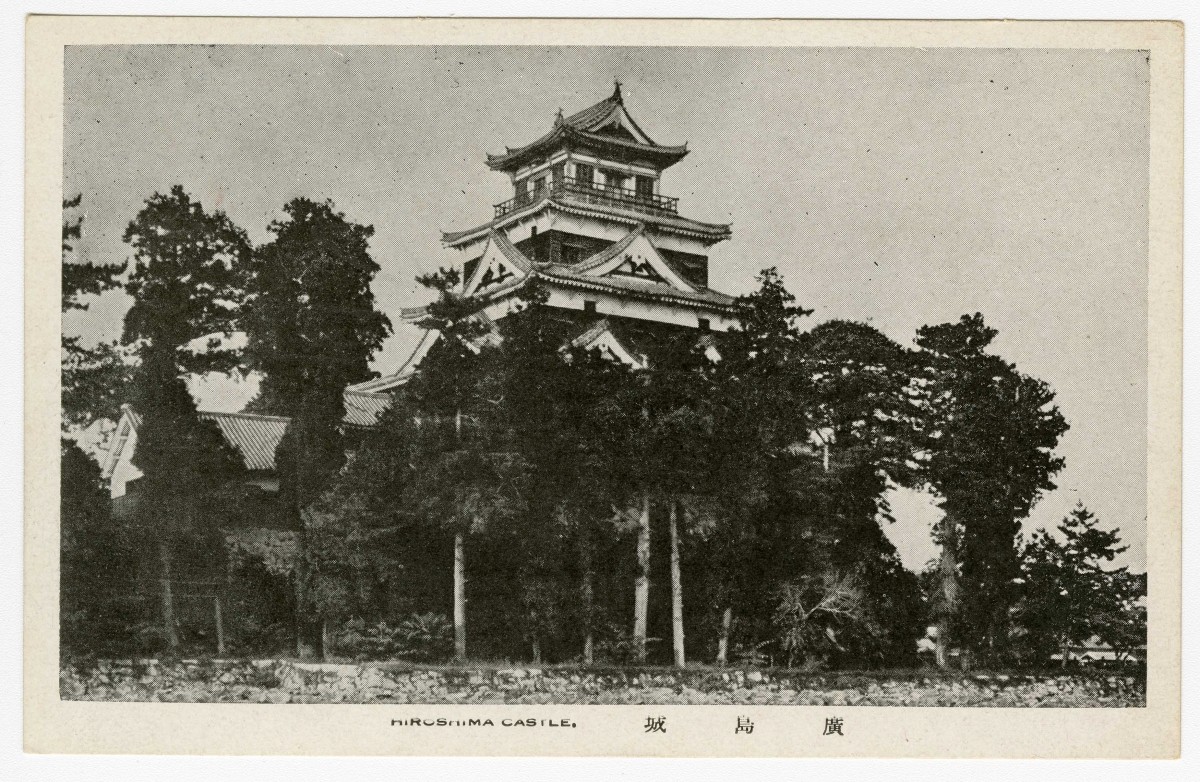
Hiroshima Castle was first constructed in 1589 during the Azuchi-Momoyama period by Mori Terumoto, one of the five great regents of the Toyotomi government. Said to be inspired by Osaka Castle and Jurakutei built by Toyotomi Hideyoshi, it was one of Japan's most expansive castles during the Edo period, with a massive 900,000 m² grounds and 88 towers.
In 1931, the main keep was designated a National Treasure, but the castle suffered a tragedy on August 6, 1945, when the atomic bomb blast caused all its main structures, including the main keep, to collapse or burn down.
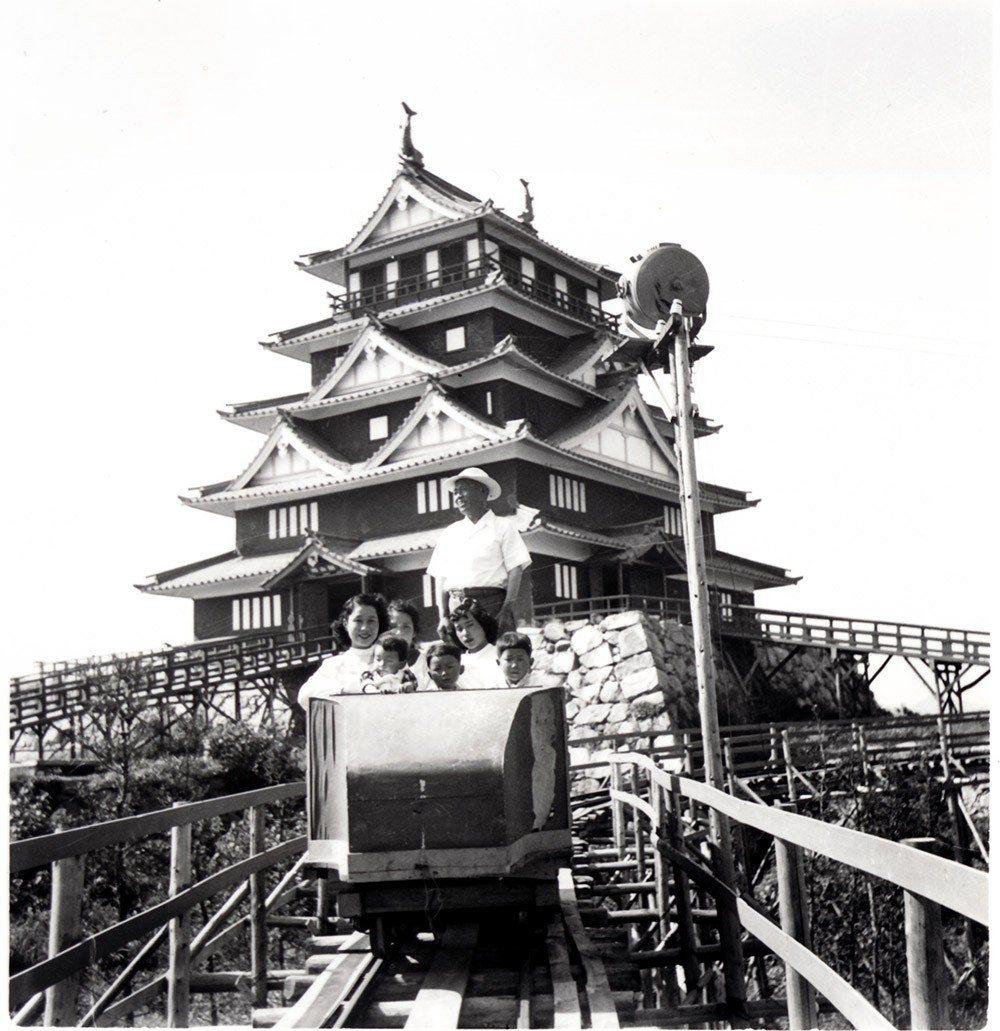
However, in 1951, a second main keep was reconstructed for the "Sports and Culture Expo" held at the Hiroshima Castle ruins. This second keep was surprisingly used as part of a theme park roller coaster! Because this second keep was a temporary structure for the expo, it was demolished after the event ended.
This, however, sparked momentum for a permanent reconstruction. In 1958, a third main keep was rebuilt as the centerpiece of the "Hiroshima Restoration Grand Exposition." This time, it was a replica made of reinforced concrete. Today, the interior serves as a history museum showcasing the culture of the samurai class.
Hiroshima Castle's Main Keep Closes on March 22, 2026
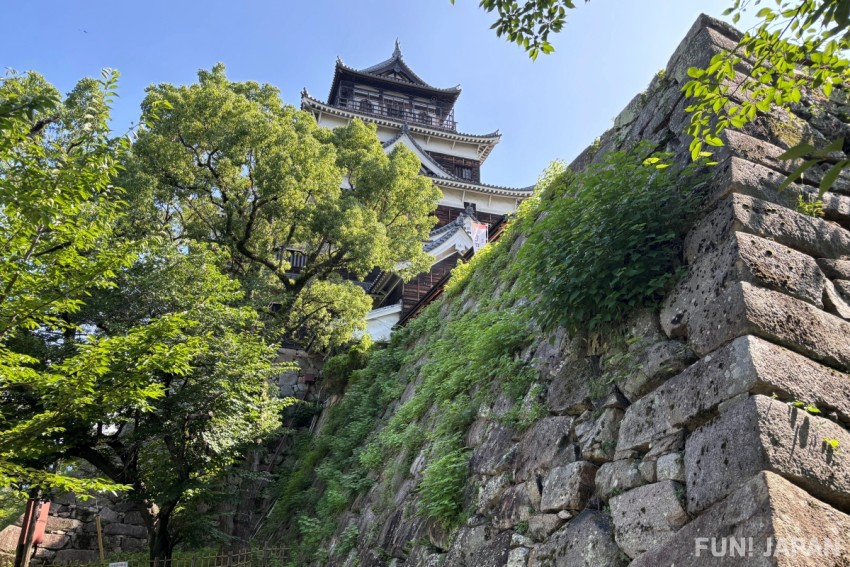
The main keep of Hiroshima Castle will close on March 22, 2026, due to aging and structural integrity issues. Although many hope for a wooden reconstruction, renovation plans are currently under consideration. In the midst of this, on August 8, 2025, the castle celebrated a major milestone, reaching 13 million visitors. A special ceremony was held to commemorate the day. A variety of events are still being planned to celebrate this "last year" of the current keep.
Furthermore, a new tourist spot, the Hiroshima Castle Sannomaru, opened on March 31, 2025. Here, visitors can enjoy Hiroshima-specific food and shopping, as well as unique cultural programs like archery and samurai-style tea ceremonies.
Located within Hiroshima Central Park, the Hiroshima Castle Sannomaru is adjacent to "Edion Peace Wing Hiroshima," the home stadium of the Sanfrecce Hiroshima football club, and the "Hiroshima Museum of Art." Its proximity to other popular tourist destinations like the Peace Memorial Park and Shukkei-en Garden is also a major draw.
Highlights of Hiroshima Castle: Exhibitions of Samurai Culture
The interior of the current Hiroshima Castle main keep is open to the public as a history museum. The museum has five floors, each with a different theme covering the history of Hiroshima Castle and the culture of the samurai class from the Azuchi-Momoyama to the Edo periods. With a rich collection of exhibits, including those designated as Hiroshima City Important Tangible Cultural Properties and interactive sections, the museum appeals to both history buffs and casual tourists.
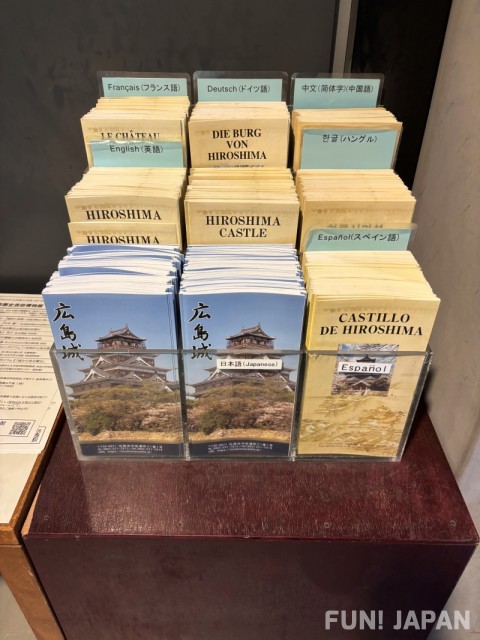
First Floor: Mori Terumoto and the Castle's Construction History
This floor features materials related to Mori Terumoto, who built Hiroshima Castle, as well as blueprints and models showing the construction techniques and scale of the time. A major highlight is the pair of gold-leaf ornamented roof tiles (Shachi-gawara) and gold-leaf ornamented Onigawara tiles that were excavated. It was the first time in Japan for a complete, well-preserved pair of these tiles to be found, making them extremely valuable cultural artifacts.
There is also an interactive area where you can try on a replica of a samurai helmet for a photo.
Second Floor: The Castle Town and Samurai Life
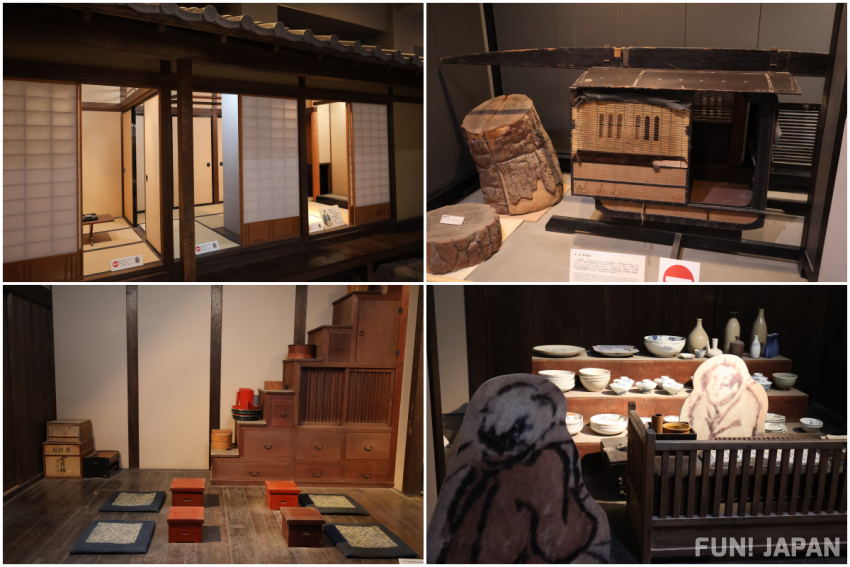
This floor introduces the streets of Hiroshima and the lives of samurai and commoners during the Edo period. The exhibits use authentic artifacts and reconstructed buildings to recreate the feel of daily life at that time.
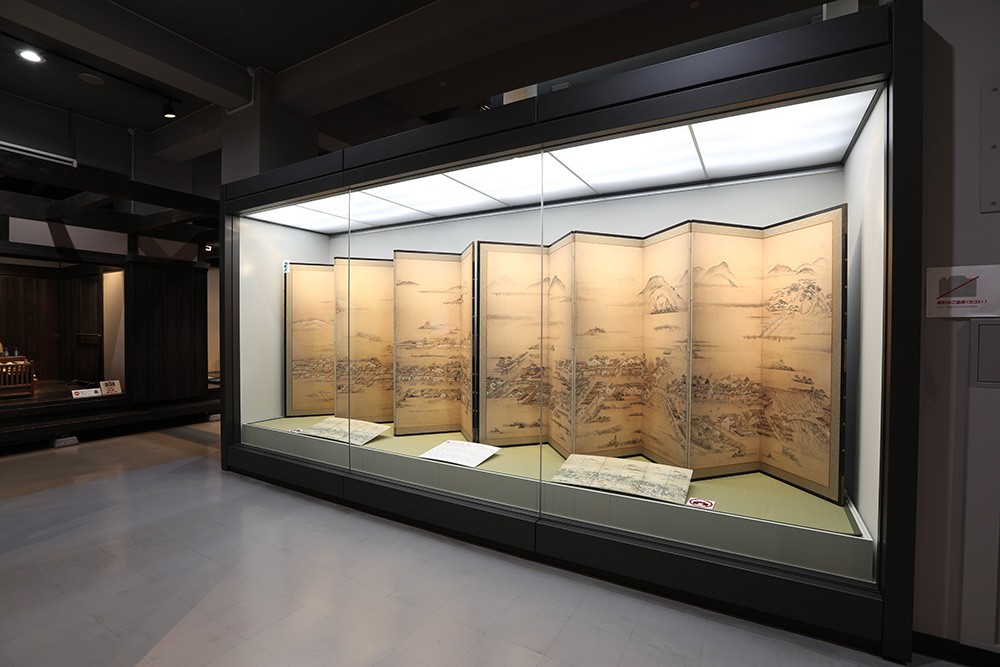
A must-see is the "Hiroshima Castle Town Folding Screen," an Important Tangible Cultural Property of Hiroshima City. It vividly depicts the lives of people along the Saigoku-kaido road throughout the four seasons.
Third Floor: Armor and Sword Exhibit
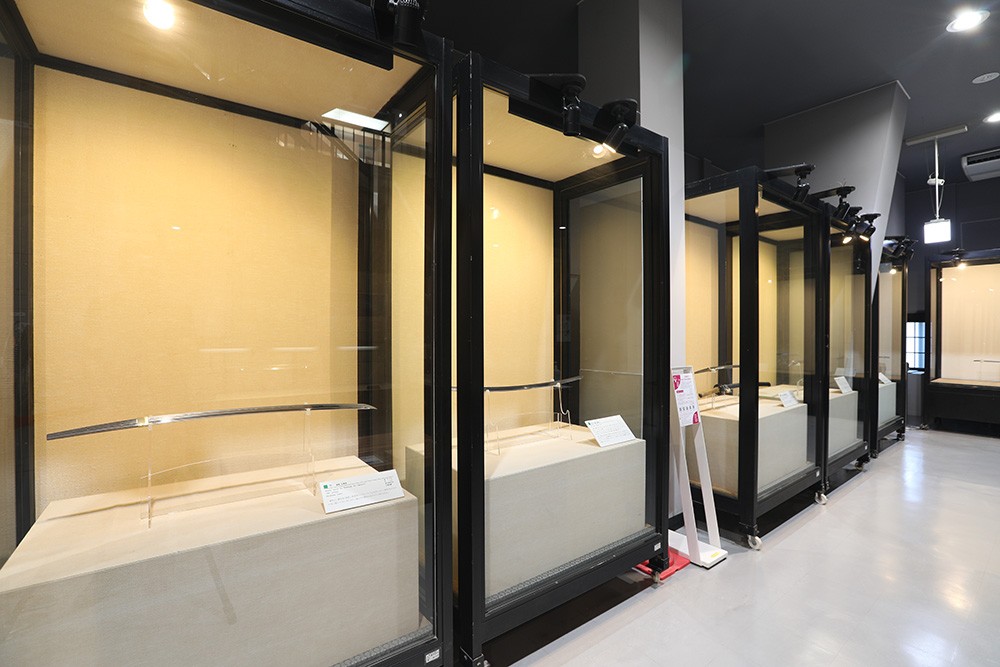
Here, you can see real suits of armor and Japanese swords used by samurai of the Hiroshima domain.
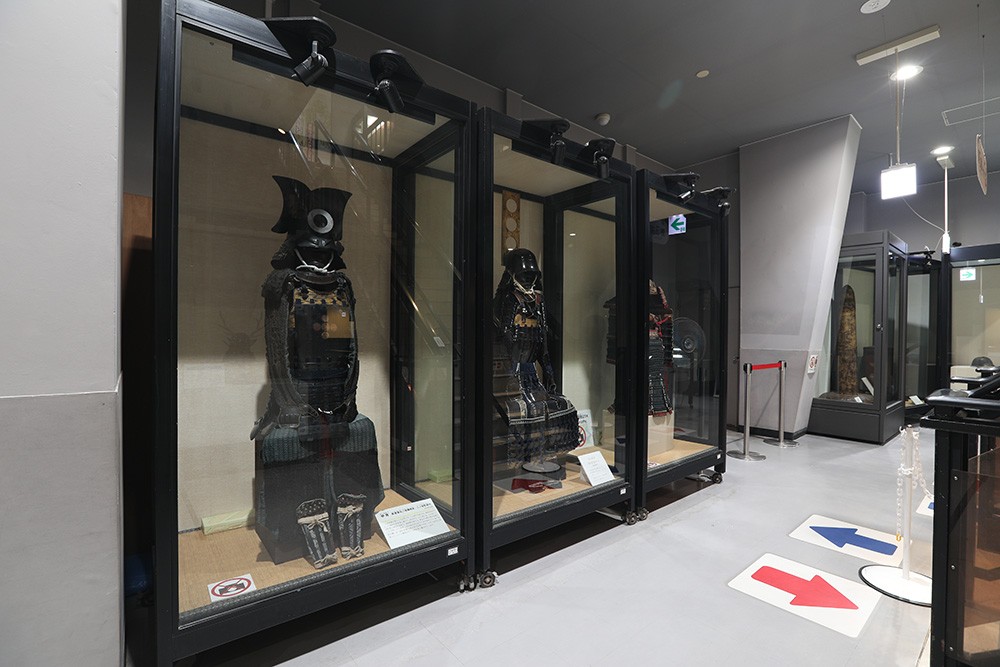
After Mori Terumoto and Fukushima Masanori, the Asano clan ruled Hiroshima during the Edo period. You can see their "Ajiro-kinpaku-oshi-tojin-kasagata-umajirushi", a horse-banner that is also an Important Tangible Cultural Property of Hiroshima City. Horse-banners were used to mark the location of a general on the battlefield and are a symbolic part of samurai culture.
Another popular section allows you to feel the surprising weight of a replica Japanese sword.
Fourth Floor: Special Exhibition Room
This floor hosts rotating special exhibitions on various themes, offering something new with every visit.
Fifth Floor: Observation Deck
The top floor is an observation deck where you can enjoy a cool breeze and a panoramic view of Hiroshima City.
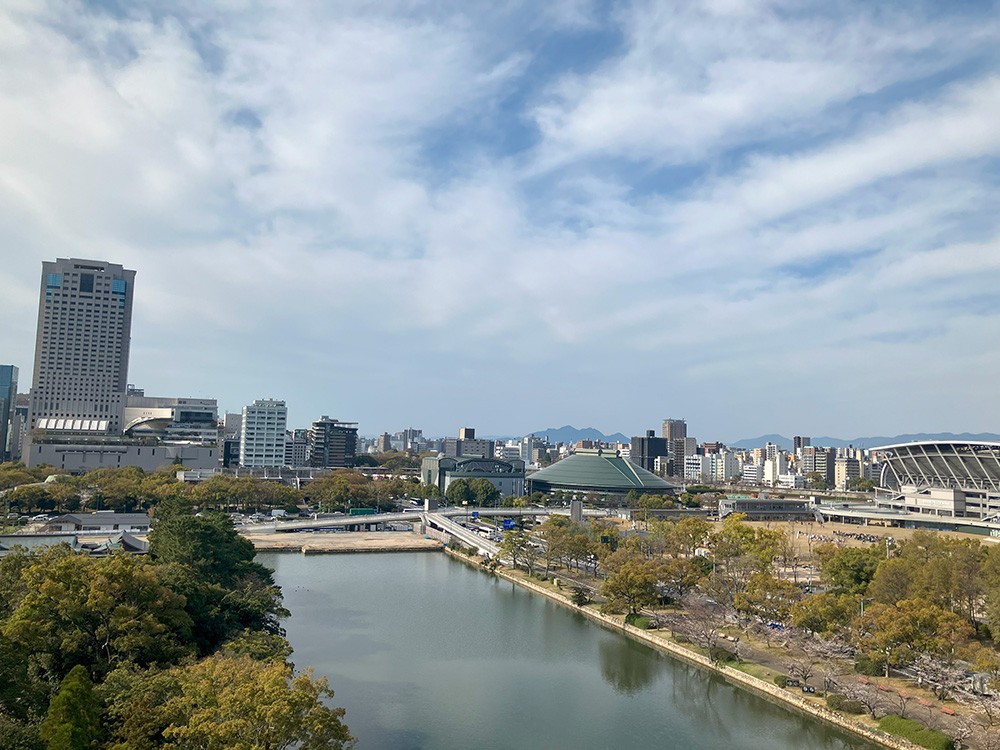
The deck is a popular photo spot, offering views of the Atomic Bomb Dome and, on a clear day, Miyajima Island.
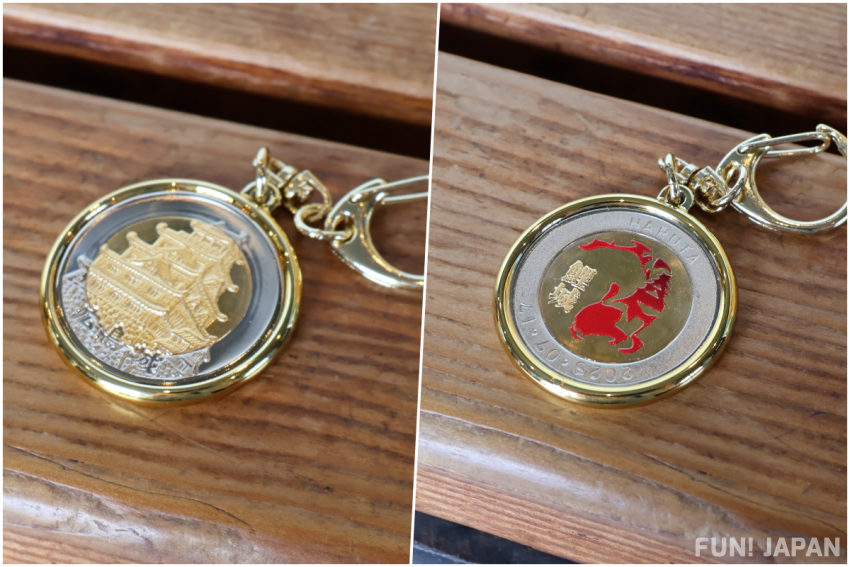
You can also purchase a commemorative medal on the observation deck! The back of the medal features a carp, a nod to Hiroshima Castle's nickname, "Rijo" (Carp Castle).
Get a Castle Stamp (Gojoin) at the Museum Shop!
On the first floor, the Hiroshima Castle Museum Shop offers original castle-themed souvenirs.
A popular item is the "Gojoin" (Castle Commemorative Stamp), which has become a trendy collector's item in recent years. Gojoin are stamped pieces of paper with the castle's name and the lord's crest, serving as a souvenir of your visit. It's a great item to add to your collection.
Be sure to grab a Gojoin book featuring the castle's beloved character, "Shirou-nya," to collect all your stamps.
Other Must-See Spots in the Hiroshima Castle Ruins
Around the main keep, several historical spots remain, showcasing the castle's history and the scars of the atomic bomb. Here are a few places you'll want to stop at on your way to the Hiroshima Castle Sannomaru.
Ninomaru
In the Ninomaru area on the south side of the castle ruins, you can see the reconstructed Omote-gomon (Main Gate), Hirayagura (Flat Tower), Taikoyagura (Drum Tower), and Tamon-yagura (Multi-bay Tower).
You can also go inside the towers, which were faithfully recreated using traditional methods. Models of the Ninomaru are also on display, allowing you to get a close look at the castle's defensive structures and architectural techniques.
The Inner Moat and Its Koi Fish
The inner moat surrounding the main keep is still filled with water, where you can see koi fish swimming gracefully.
It's a great photo spot, as the water reflects the cherry blossoms in spring and the autumn leaves in fall, showing a different face with each season.
Hiroshima Gokoku Shrine
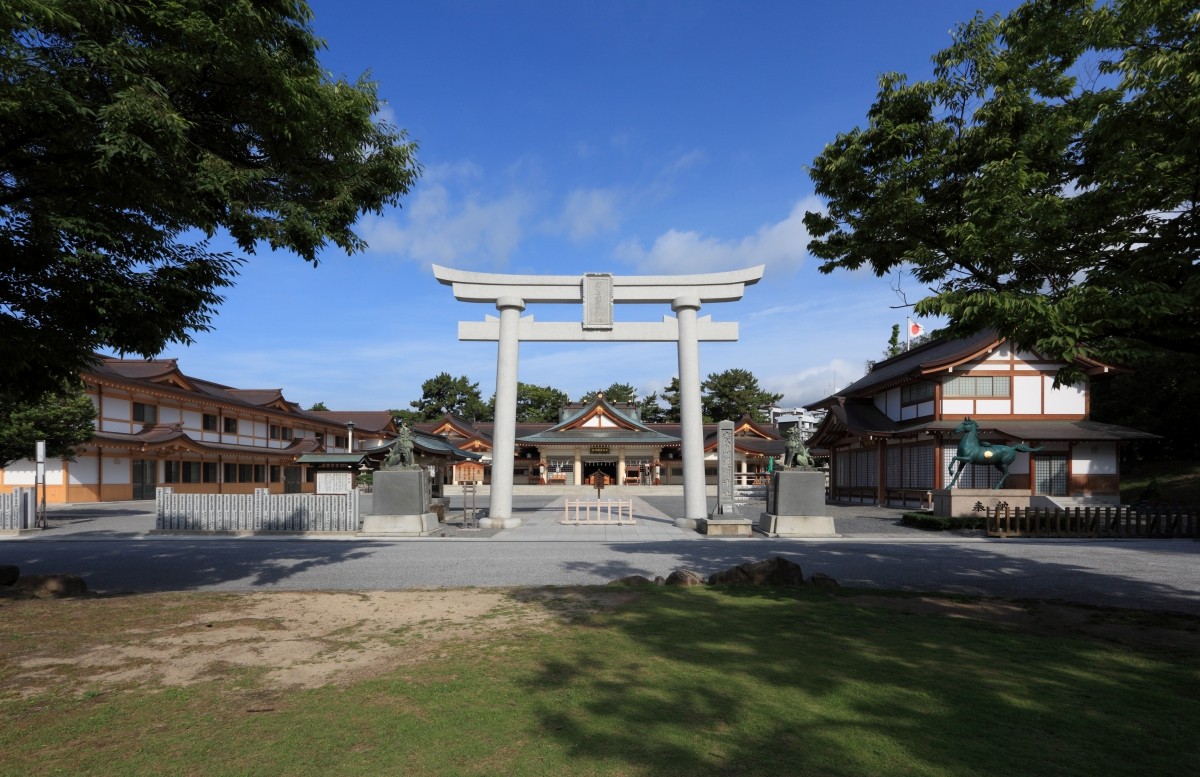
Located on the castle grounds, the Hiroshima Gokoku Shrine is a venerable shrine that was relocated to its current site in 1956 to enshrine the spirits of those who died in the war. You can enjoy collecting a Go-shuin (shrine stamp) and getting a fortune, and the shrine provides English explanations for international visitors.
A-bombed Survivor Trees
Throughout the castle ruins, several trees that miraculously survived the atomic blast and heat are still standing. These resilient trees, including Japanese holly and eucalyptus, are symbols of peace and leave a strong impression on visitors.
Head to the New Hiroshima Castle Sannomaru! Enjoy Hiroshima's Food and Culture
After exploring the castle ruins, make your way to the newly opened and highly anticipated Hiroshima Castle Sannomaru. This area features five unique shops where you can experience Hiroshima's culture and cuisine.
In addition, preparations are underway for the Hiroshima Castle Sannomaru History Museum, which is scheduled to open in the spring of 2027. This museum will be the new home for the exhibits from the Hiroshima Castle main keep.
Sannomaru Hassho
This authentic okonomiyaki restaurant is run by a chef who trained at "Yagenbori Hassho," a renowned okonomiyaki restaurant in Hiroshima.
Unlike the Osaka-style, Hiroshima-style okonomiyaki is made with a thin crepe-like base, topped with a generous amount of cabbage and Chinese noodles.
The Chinese noodles used are from "Isono Seimen," a purveyor to many okonomiyaki restaurants in Hiroshima. This is a must-visit spot after your castle tour.
SOKO CAFÉ
This cafe is supervised by the Ueda Soko-ryu school, which follows the teachings of the samurai tea master Ueda Soko. They offer a selection of drinks and sweets made with high-quality matcha. The Matcha Float with soft-serve ice cream is highly recommended.
The "Samurai Tea Experience Set," where you can whisk your own tea, is also popular and a great way to easily experience a culture tied to a samurai warlord.
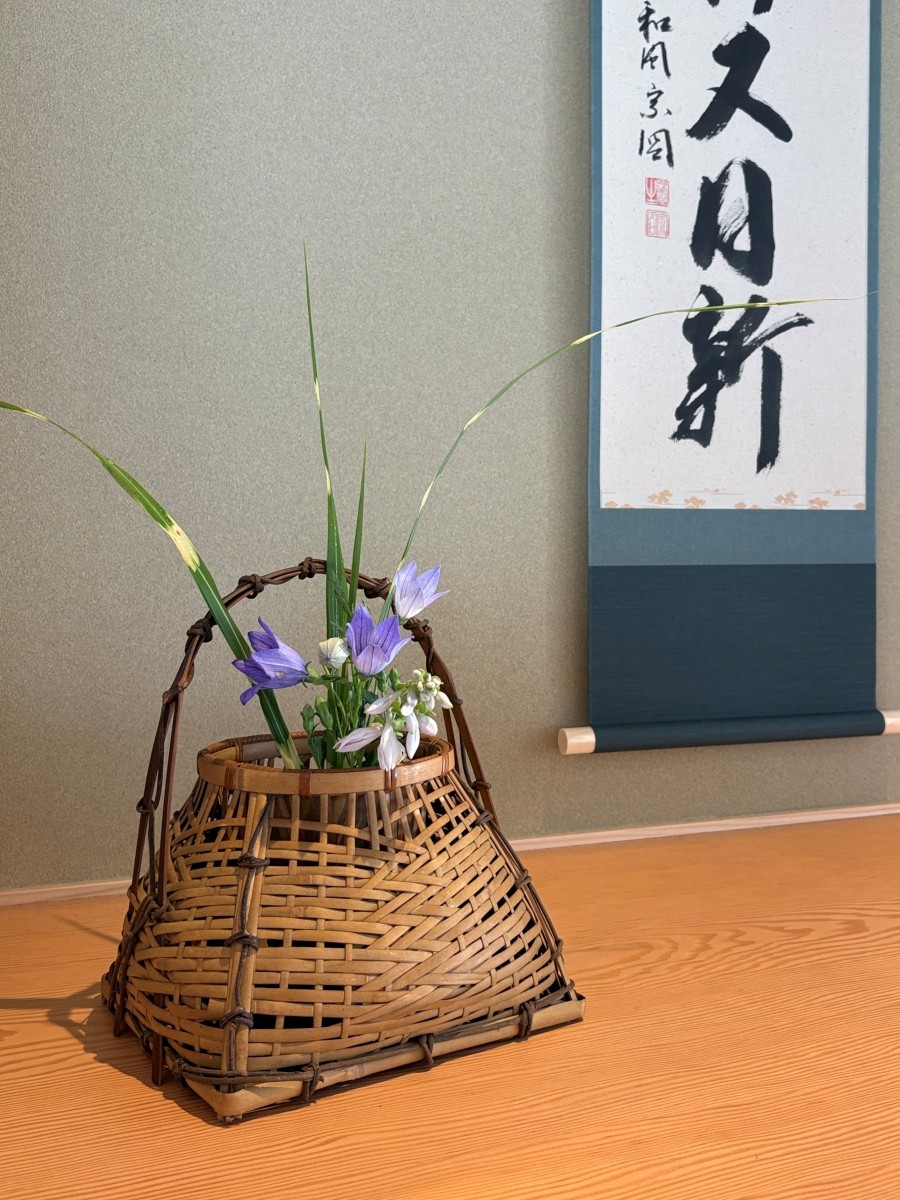
The flowers in the shop are also arranged in the Ueda Soko-ryu style!
Hiroshima IPPIN Hiroshima Castle Sannomaru
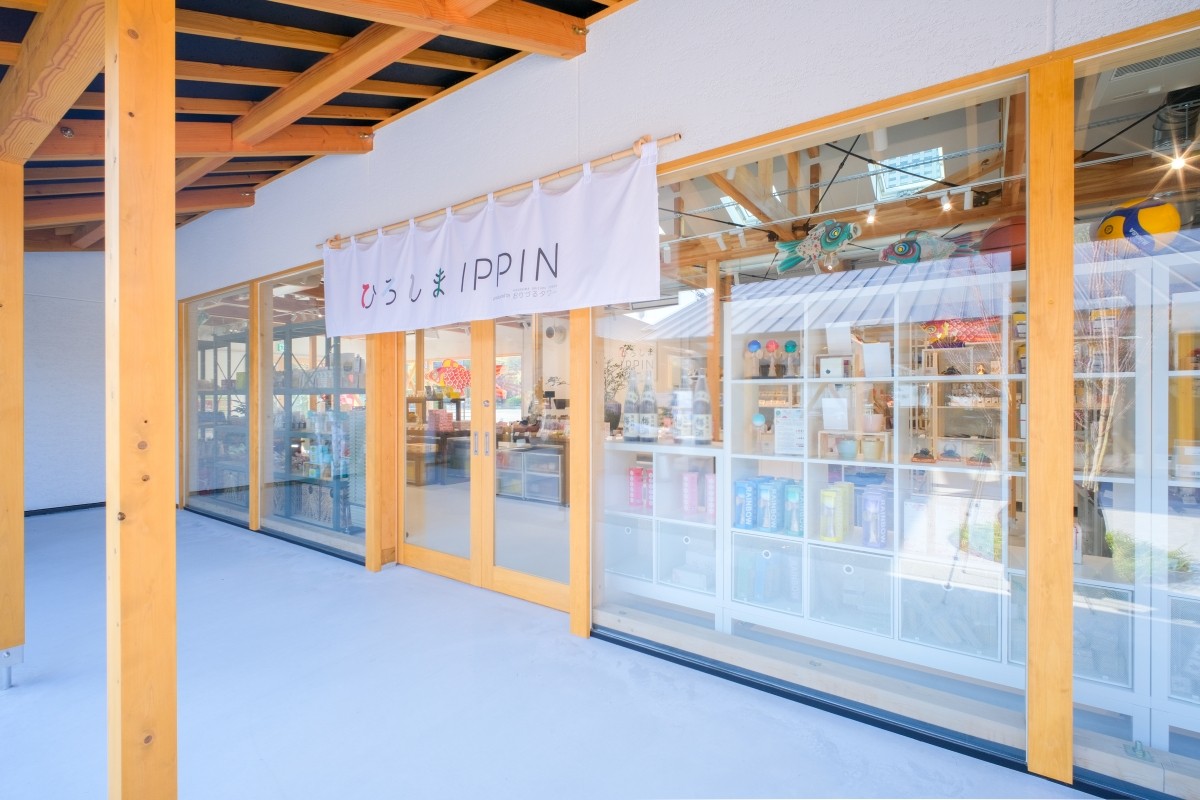
This souvenir shop offers a curated selection of about 600 items, including Hiroshima specialties and products co-developed with local companies.
The private-label "IPPIN BRAND" is a recommended series of products jointly developed with famous local businesses.
Even the well-known "Lemon Cake" has been carefully selected by the shop's buyers. This is the perfect place to find a unique souvenir from Hiroshima.
Charcoal-Grilled Unagi No Unaki Hiroshima
A famous Nagoya restaurant has opened its first location in Hiroshima. They use only the highest quality Japanese eel of the day. The fragrant, charcoal-grilled eel is a must-try, and the conger eel dishes, available only at the Hiroshima location, are also highly recommended.
Hiroshima Castle Sharaku
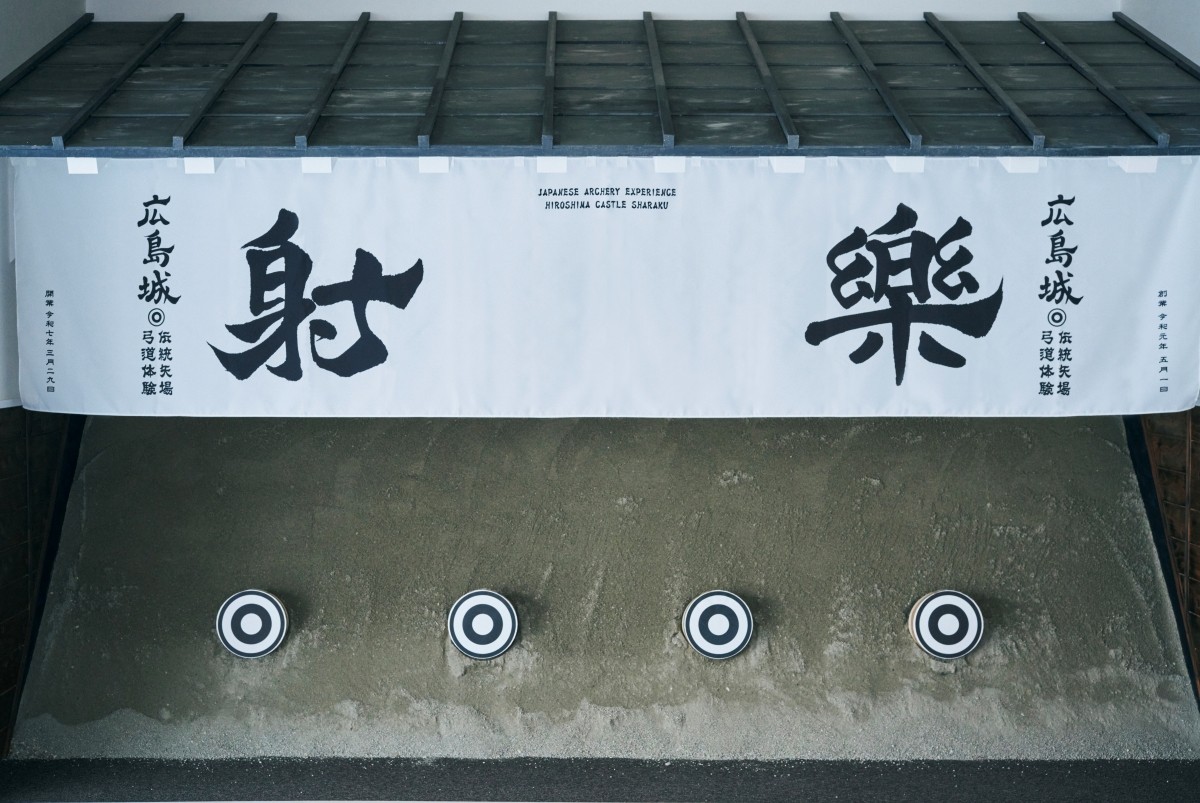
This is the first permanent mini-archery range to be located inside a castle in Japan. Even beginners can easily try their hand at archery, making it a popular spot for international tourists. It's a unique facility that allows you to experience a traditional Japanese cultural art.
Experience Hiroshima's History, Culture, and Food All at Once!
Hiroshima Castle and the Hiroshima Castle Sannomaru offer a chance to experience the history that spans from the Sengoku period to modern times, as well as the unique culture and cuisine of Hiroshima. Be sure to stop by when you visit the city!
Hiroshima Castle Main Keep
Address: 21-1 Moto-machi, Naka-ku, Hiroshima-shi, Hiroshima
Opening Hours: 9:00 AM - 6:00 PM (March-November), 9:00 AM - 5:00 PM (December-February) *Last entry 30 minutes before closing.
Access: 17-minute walk from Shin-Hakushima Station, 15-minute walk from Kamiya-cho-Higashi or Kamiya-cho-Nishi streetcar stops.
Hiroshima Castle Ninomaru
Address: 21 Moto-machi, Naka-ku, Hiroshima-shi, Hiroshima
Opening Hours: 9:00 AM - 5:30 PM (April-September), 9:00 AM - 4:30 PM (October-March) *Last entry 30 minutes before closing.
Access: 15-minute walk from Shin-Hakushima Station, 9-minute walk from Kamiya-cho-Higashi or Kamiya-cho-Nishi streetcar stops.
Hiroshima Castle Sannomaru
Address: 21-7-2 Moto-machi, Naka-ku, Hiroshima-shi, Hiroshima
Opening Hours: 10:00 AM - 6:00 PM *Hours may vary by shop.
Access: 15-minute walk from Shin-Hakushima Station, 9-minute walk from Kamiya-cho-Higashi or Kamiya-cho-Nishi streetcar stops.
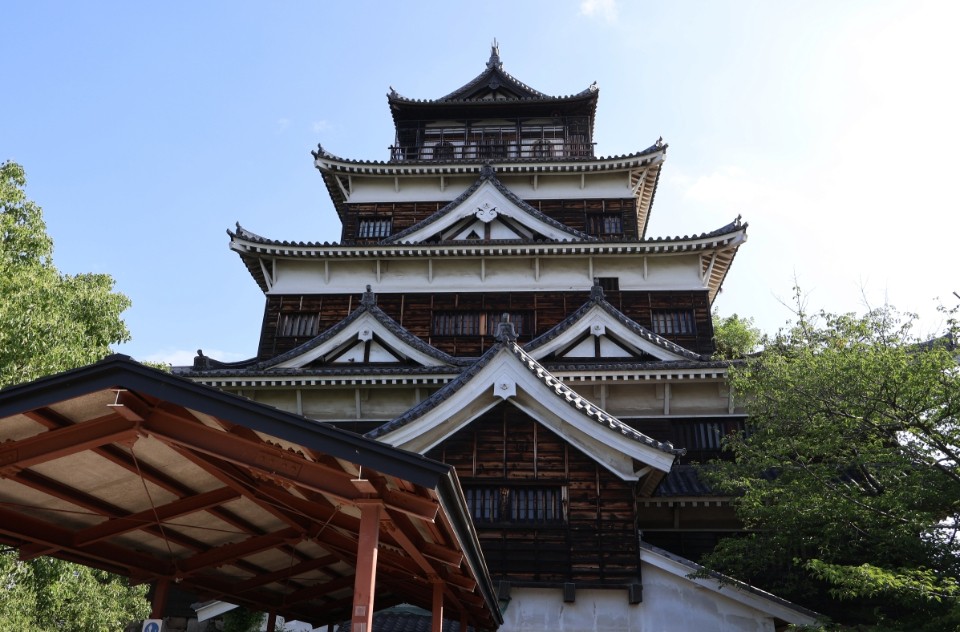
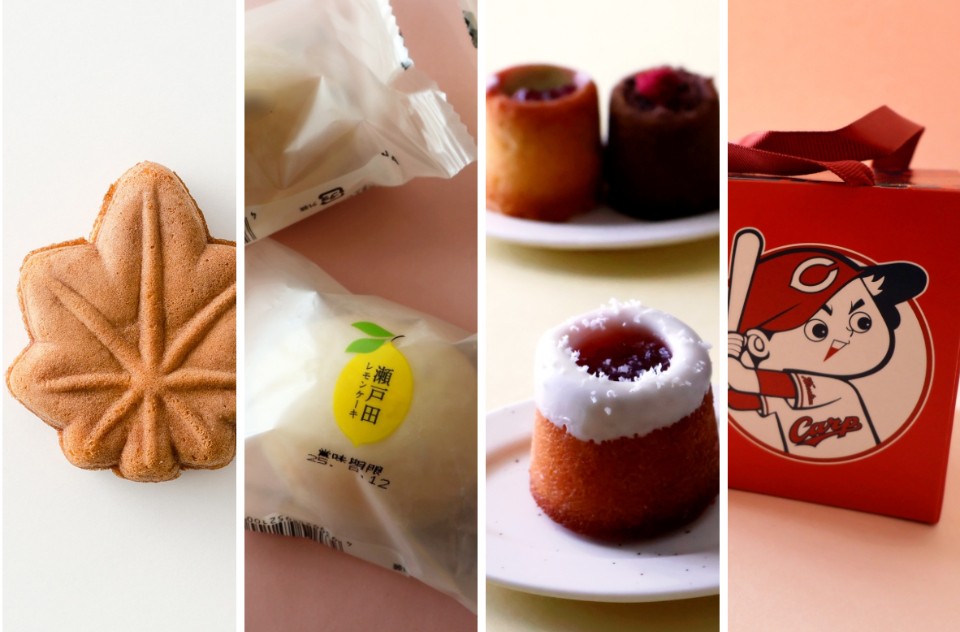
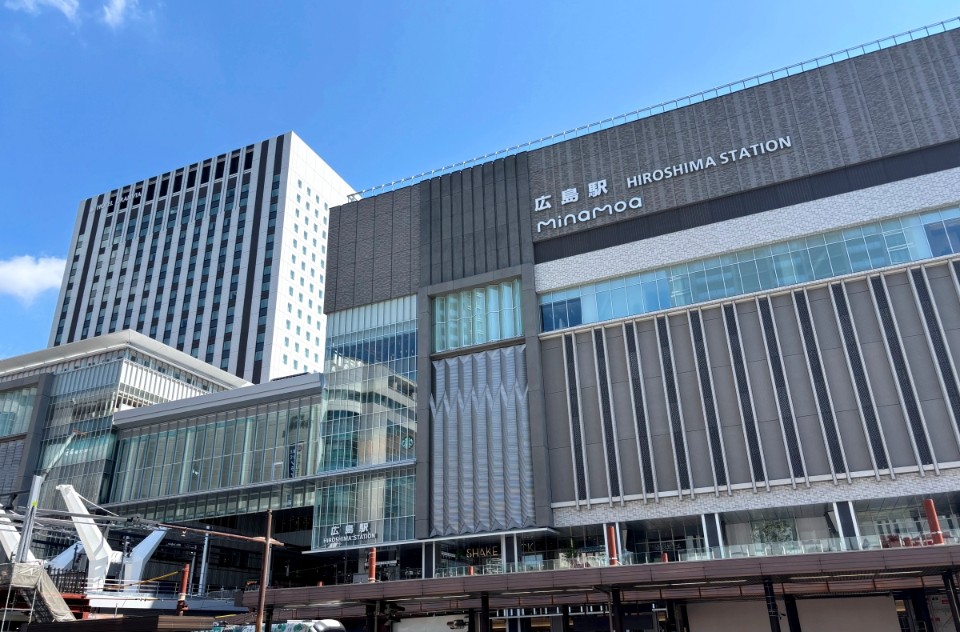
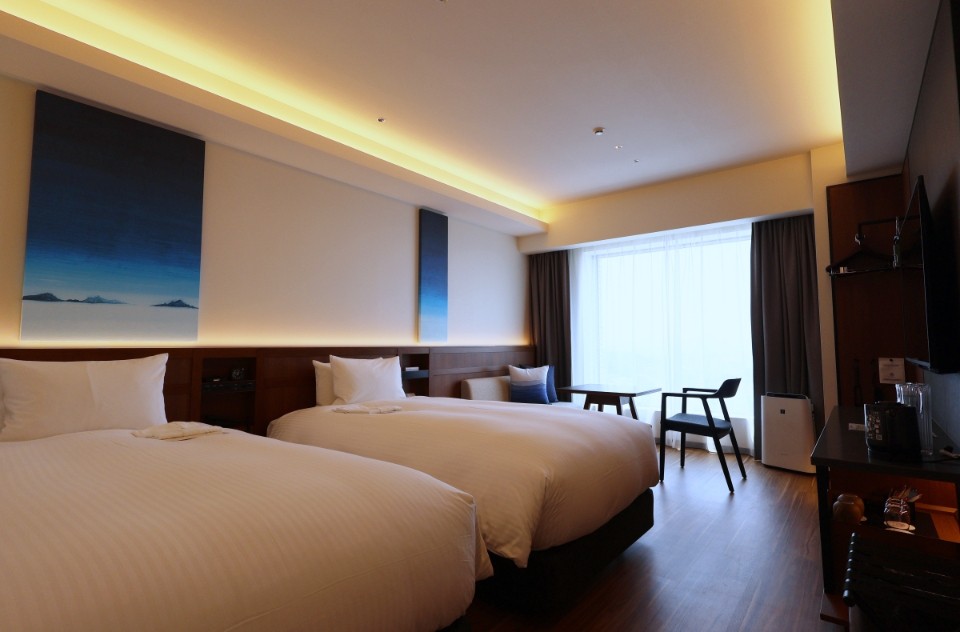
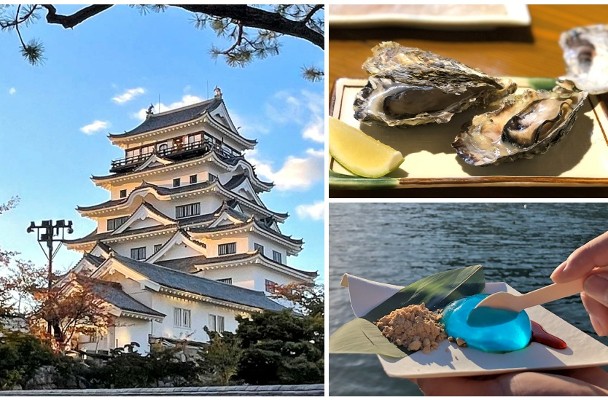
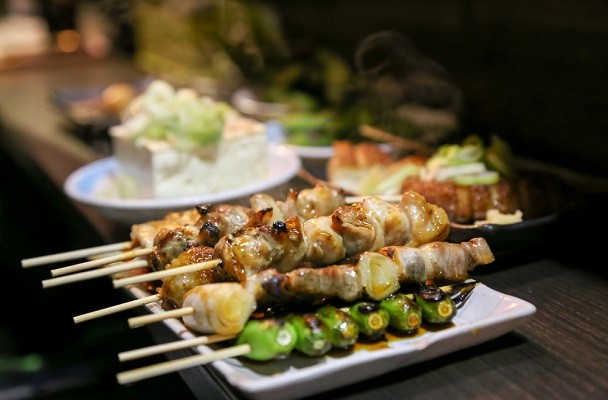
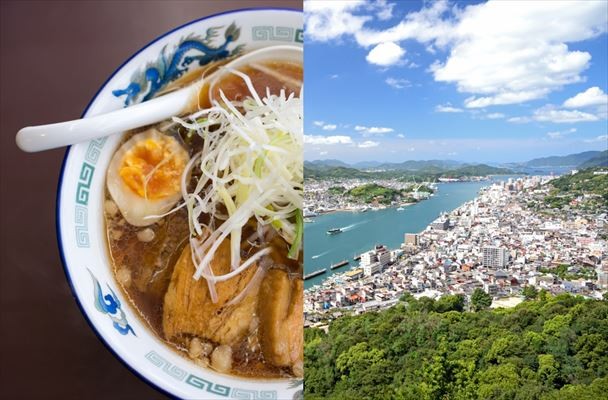
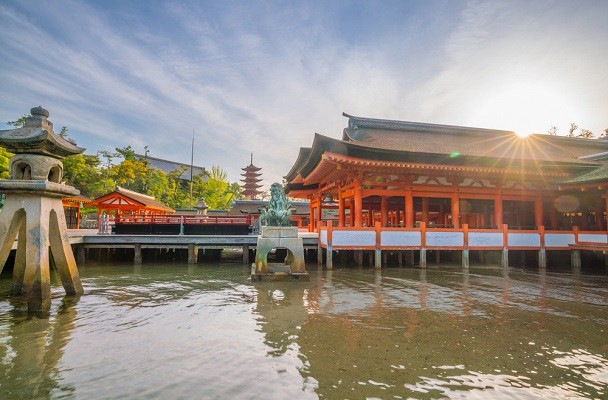
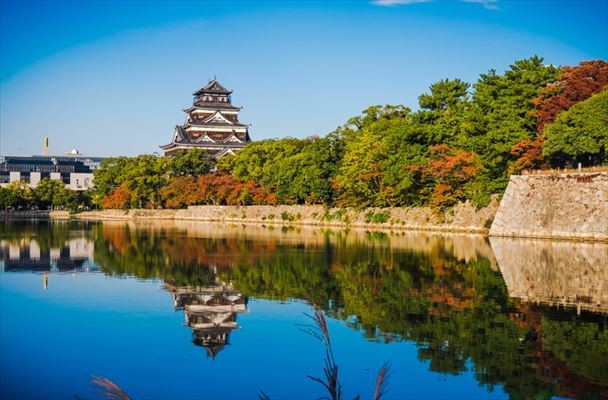
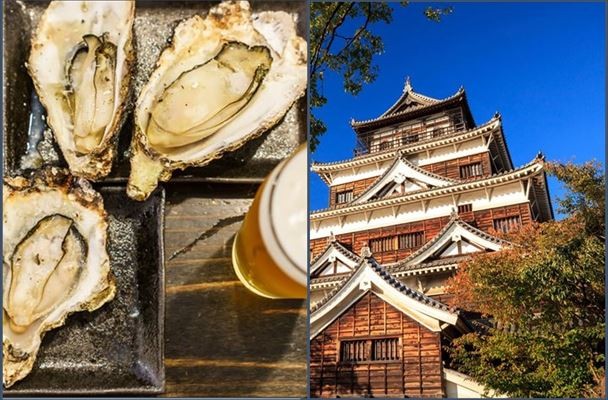
Comments